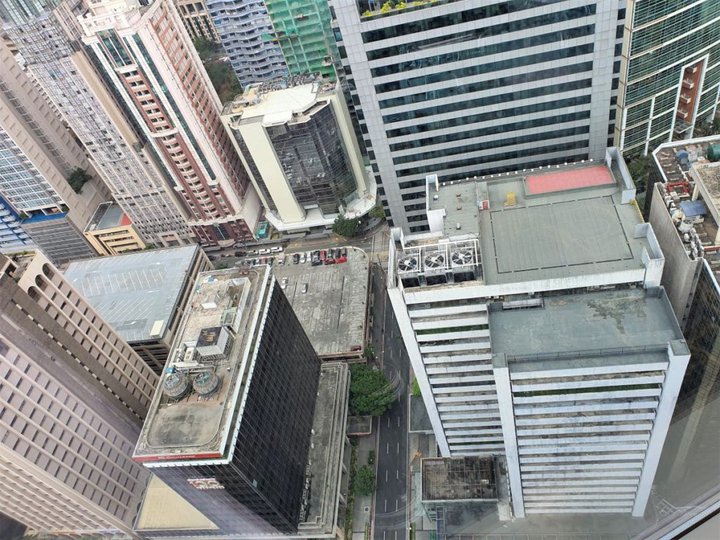Back to All About Philippine Real Estate
The Burden And Future Of Compact City In The Philippines
The Burden And Future Of Compact City In The Philippines
In contrast to the dispersed city, the compact city has appealing features, such as continuous and contained urban development demarcated by legible boundaries, high local and regional accessibility; improved centers; smaller infrastructure networks; and greater control over government oversight.
Many experts regard compact cities as more sustainable urban models since diverse modes of transportation stimulate shorter trips, reduce infrastructure spending, and improve community connectedness.
A water or power network that serves various isolated footprints, for example, can now service a far more significant number of people in a given area due to the density. Other government services, such as hospitals and schools, follow the same reasoning. Furthermore, its continuous and compact design minimizes the formation of urban interstices such as abandoned lots and wastelands.
Wise Use Of Space
As cities get more extensive and crowded, the sprawl takes away more agricultural land and green spaces. It makes it harder for communities to find a place to live together because cars and public transportation have to go farther. As a result, many cities and regions have developed plans to encourage urban densification through in-fill growth and urban consolidation. The intention is to avoid future urban expansion and the artificialisation of open and green spaces.
Aside from the more extensive, more ordered system of compact cities, dense residential areas need more intense use of space when compared to individual houses with setbacks and yards. Urban agglomerations come in densely packed models with clearly defined boundaries than natural habitats.
Since the early 1990s, Makati has since become one of the most walkable cities in the Philippines by allowing buildings in the commercial business district (CBD) to be denser than originally planned. Makati CBD also incorporated two-kilometer elevated walkways, four-kilometer covered paths, two pedestrian overpasses, seven pedestrian underpasses, and eight more access ways to encourage pedestrian roaming.
Addressing Mobility in a Compact City
Mobility is essential in a compact city to avoid traffic and pollution caused by driving as the population expands. A well-functioning public transit system is particularly necessary for mobility in the Philippines. The transits should mostly be accessible by foot or bicycle as well due to the diversity and concentration of services in a defined region.
The compact city encourages public transportation, biking, and walking, electric and shared mobility. Examining different forms of urbanism may also assist in addressing Metro Manila congestion that adheres to fundamental city center regulations. Cities and eco-districts with successful electric car-sharing schemes, such as Madrid, Utrecht, Amsterdam, and Paris, are heading in this direction. The Philippines should look into a complete and accessible transportation solution that promotes intermodality and long-term mobility with flexibility.
The growing population and popularity of online shopping also bring up the question of a city’s supply chain. Electric utility cars that are “zero-emission” are already finding a place in today’s urban ecosystem, especially last-mile deliveries. Chapelle International, a new urban and logistics zone north of Paris, has integrated this concept from the start by merging freight and electric vehicles. This project entails the construction of a 45,000-square-meter logistics hotel capable of handling two trains each day, or the equivalent of 40 semi-trailers, bringing goods to the capital. Clean cars may take oversupply to the rest of the city due to the centralization of critical logistics in this location.
Amsterdam Is an Example of a European Compact City
The Netherlands is a remarkable example of urban development incorporating compact city ideas. What’s the goal? The objective is to combat the decline of cities and middle-class suburbanization. The construction of new housing projects on urban wastelands and the transformation of abandoned structures into mixed-use developments help revitalize city areas. An example of this is Amsterdam’s abandoned eastern port district. Since 2011, the city has begun developing taller and higher structures to compensate for the lack of space. Fresh office buildings are popping up in well-served public transportation regions that prioritize housing strategies.
Urban Densification In A Compact City
The redevelopment of a decommissioned thermal power plant into a high-end complex of stores and condominiums in Rockwell Center, Philippines, is a spectacular example of repurposing existing assets as part of densification.
Increasing numbers of people see urban densification as necessary, and it is essential to avoid net land loss. The objective of no net land take requires minimizing future losses of agricultural and natural lands. The framework lowers the use of such open lands in future projects for the country. It compensates for that which will continue in expanding housing, commercial zones, transport lines, and other considerations.
Densification occurs in many locations. However, it is prevalent in rapidly growing cities due to shifting demographics, economic pressure, and significant investments to enhance transportation infrastructure. When calculating the costs and advantages of density, it is essential to consider the potential direct, indirect, and cumulative impacts on the local environment, economy, and society.
Finding the circumstances that may provide the most outstanding value for the city, selecting the optimum locations for future inhabitants and activities, and trying to make the city more equitable comprise the process of optimizing density. Cities must monitor and regulate both hard and soft densification to prevent overcrowding, which is detrimental to the resilience of cities.
A Double-Edged Sword
According to researcher Michael Neuman, the paradox of compact cities derives from the link between urban form and regulation. Developing cities in this mold requires strict planning ideas and procedures. Yet, their abuse can be harmful, as there is little possibility for organic experimentation, which is a vital component for healthy urban growth.
There are several laws in the Philippines that address every facet of humanity and how the government should care for its citizens. But the execution is where most programs consistently fail. The lack of controls or excessive regulations constantly results in system game-playing in many well-intended local projects.
Despite several discrepancies in policymaking, the compact city idea has grown in popularity in recent years. More so, impact frameworks that align with sustainability principles can improve Filipino’s quality of life by bringing stores and services closer to their homes, promoting alternative transportation, and fostering community interaction while saving urban standards from decay.
Between Compactness and Sustainability
By bringing the necessary daily services that residents need close together and densifying the space, the compact city offers reduced travel time and alternative modes of transportation. This approach allows cities to pool development investment and ensure the protection of natural areas. All in a model of sustainable urbanization. As a result, a compact city is a sustainable city. Is this to consider that consolidated urban centers must also be sustainable? The two ideas appear to be mutually beneficial.
What Is Sustainable Urbanism?
Sustainable urbanism is the practices and strategies for designing and developing cities that focus more on resilience and can last in the long run by reducing material use, lowering energy consumption, reducing pollution, minimizing waste, and improving social equity and well-being. Studies begin with the relationship between urban planning and sustainable development in a world that is becoming increasingly metropolitan. The compact city is the central concept of sustainable urbanism.
There are several notions about what a sustainable city should be or look like. And therefore various methods to think about it. A sustainable city may be a collection of techniques for planning and designing municipalities referencing what we know about sustainability. It is an example of sustainable urban development, a method of achieving long-term urban viability objectives in a planned manner. It must strike a balance between sustainability’s environmental, economic, and social aims as an integrated process. Consequently, a city has a higher chance of being greener, more equitable, and more lucrative for all residents if executed with the right balance.
By 2050, cities will be home to roughly 70% of the world’s population. The compact city in the Philippines will play an essential role in urban plans to counteract this population influx while preserving natural resources.
https://www.ianfulgar.com/architecture/the-burden-and-future-of-compact-city-in-the-philippines/
2 Likes4 Replies
Nice
thanks
Nice
Thank you Sir



















